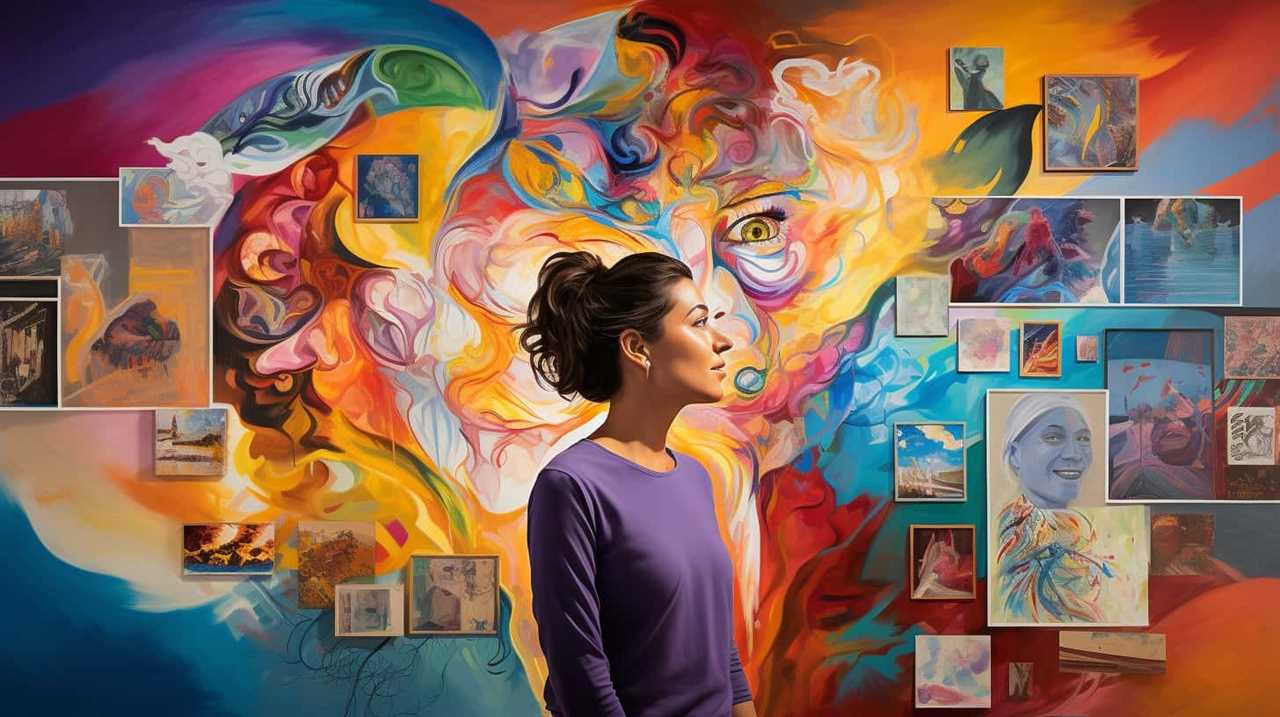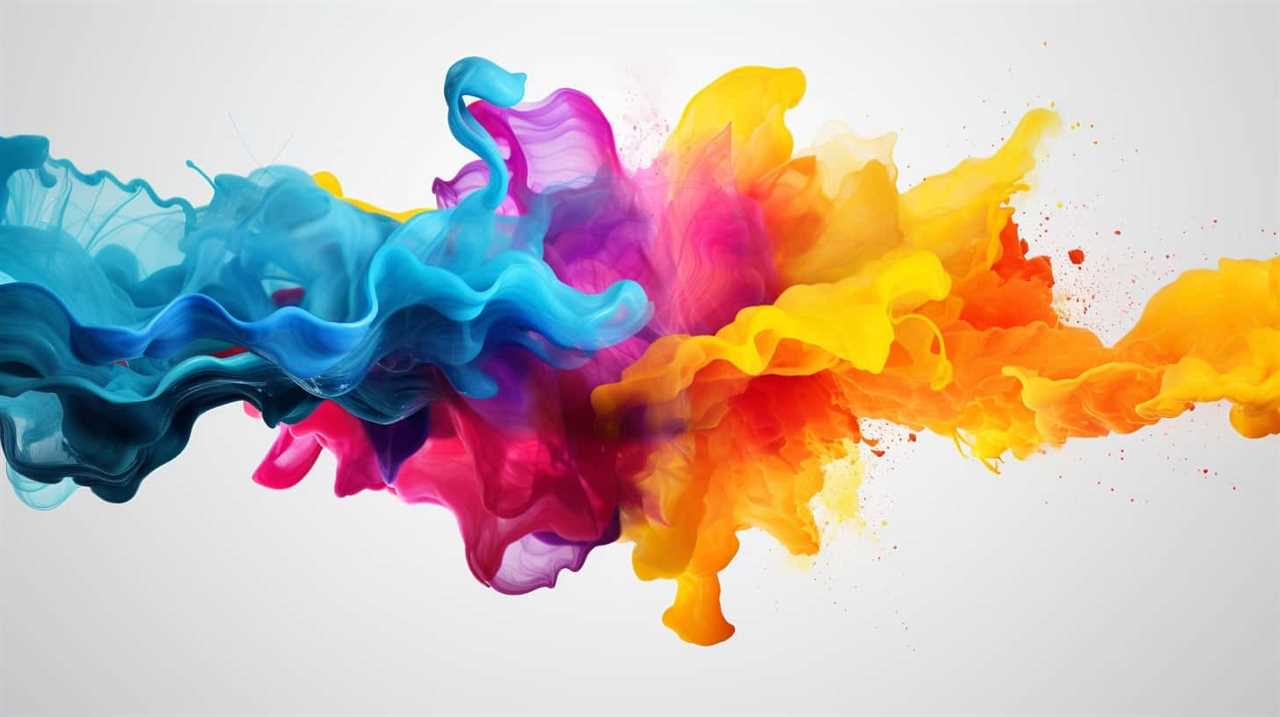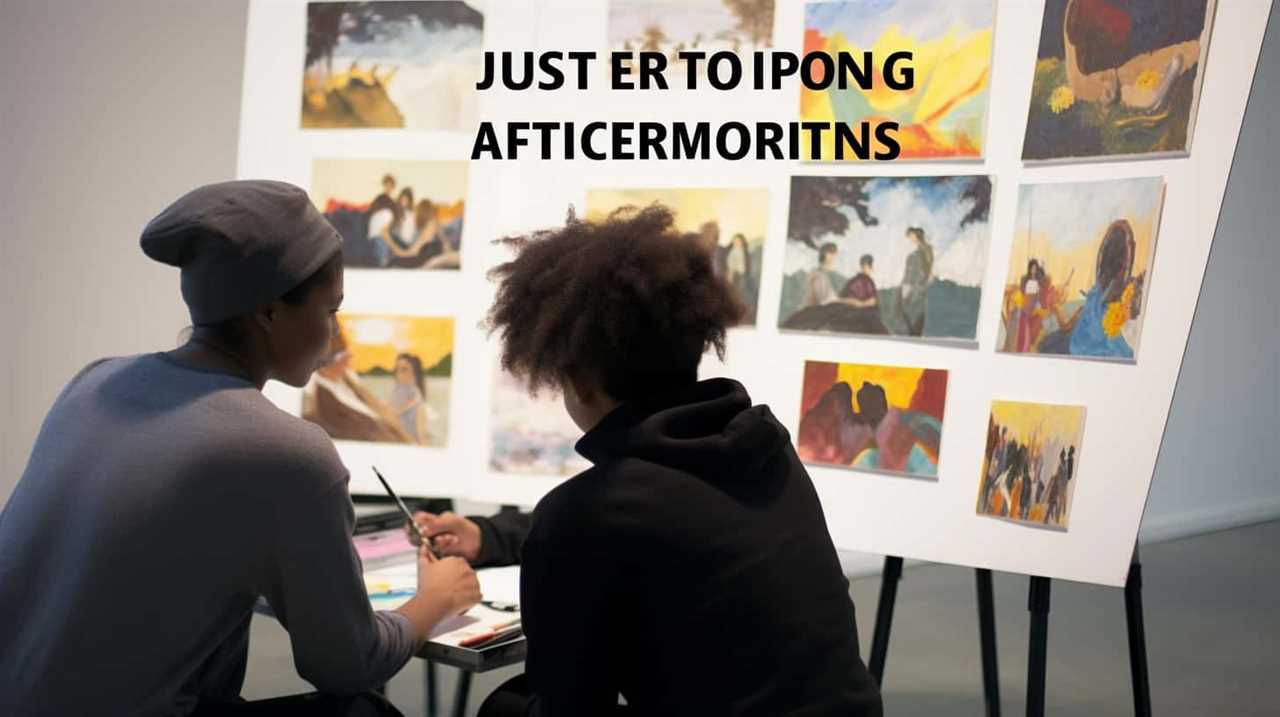Are you ready to tap into your creativity in the digital age?
We, the authors of ‘Insights on Creativity in the Information Age: 15 Tips,’ invite you on a journey of liberation and self-expression.
In this guide, we share practical tips and thought-provoking perspectives to help you navigate the digital landscape and tap into your artistic potential.
Through the power of technology and social media, we explore how you can find inspiration and connect with a global audience.

With authenticity as our compass, we delve into the balance between the virtual and the real, addressing criticisms and adapting to the ever-changing art market.
Join us as we envision the future of art in this digital revolution.
Let’s revolutionize creativity together!
Key Takeaways
- Digitalization has transformed artistic expression by providing artists with a wide range of digital tools.
- The democratization of artistic expression has been facilitated by digitalization, allowing people from all backgrounds to engage with and create art.
- Digital tools provide artists with the ability to experiment with various brushes, textures, and effects, pushing the boundaries of imagination.
- The digital era democratizes art and makes it accessible to all.
The Impact of Digitalization on Art
In our exploration of creativity in the information age, we’ll now delve into the profound impact of digitalization on the art world.
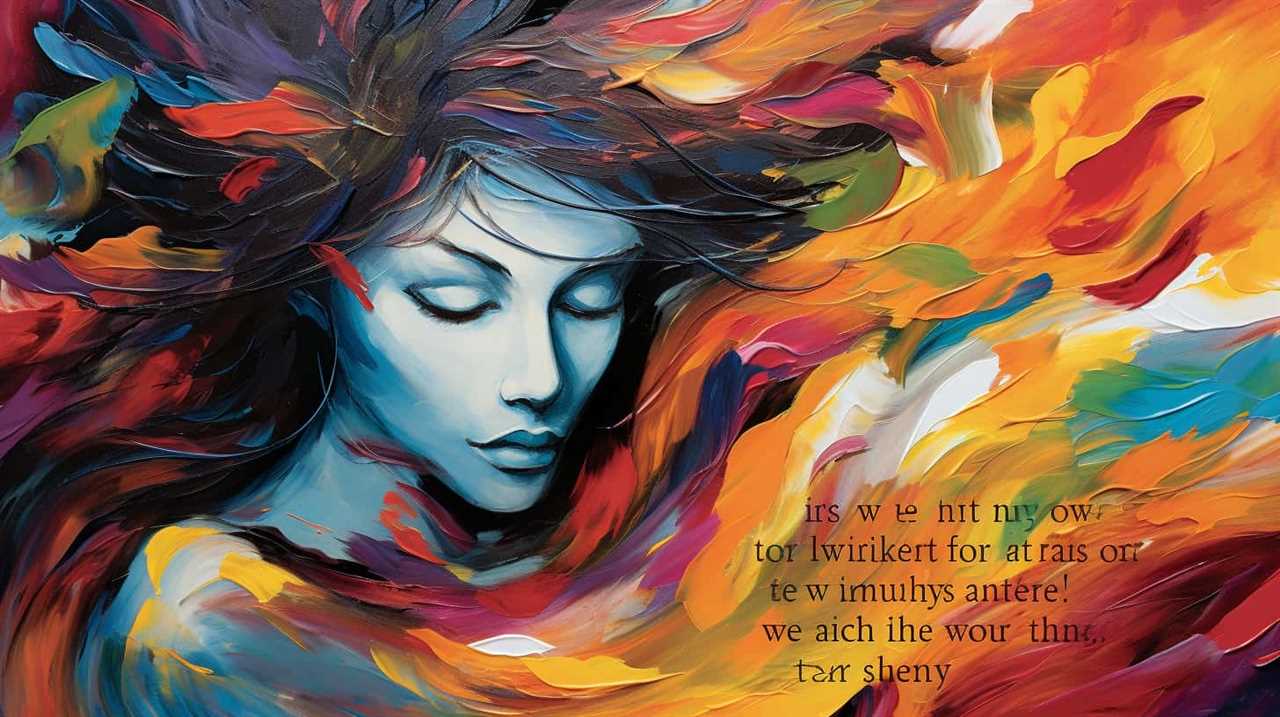
Digitalization has revolutionized the way traditional art forms are created and consumed, transforming the very essence of artistic expression. With the advent of digital tools, artists now have a vast array of possibilities at their fingertips, enabling them to push the boundaries of their creativity like never before.
One of the most significant impacts of digitalization on art is the democratization of artistic expression. Digital tools have made it easier for individuals from all walks of life to engage with and create art. Gone are the days when only the privileged few had access to expensive art supplies or the means to showcase their work. Now, anyone with a smartphone or a computer can become an artist and share their creations with the world.
Moreover, digitalization has blurred the lines between different art forms, allowing artists to experiment and combine various mediums. Traditional painting can now be enhanced with digital effects, sculptures can be brought to life through virtual reality, and music can be created using innovative software. The possibilities are endless, limited only by the artist’s imagination.
However, as with any technological advancement, there are challenges that come with the impact of digital tools on artistic expression. The digital realm can sometimes feel overwhelming and impersonal, with an abundance of content vying for our attention. Additionally, the ease and speed with which digital art can be created and shared raise questions about the value and authenticity of the artwork.
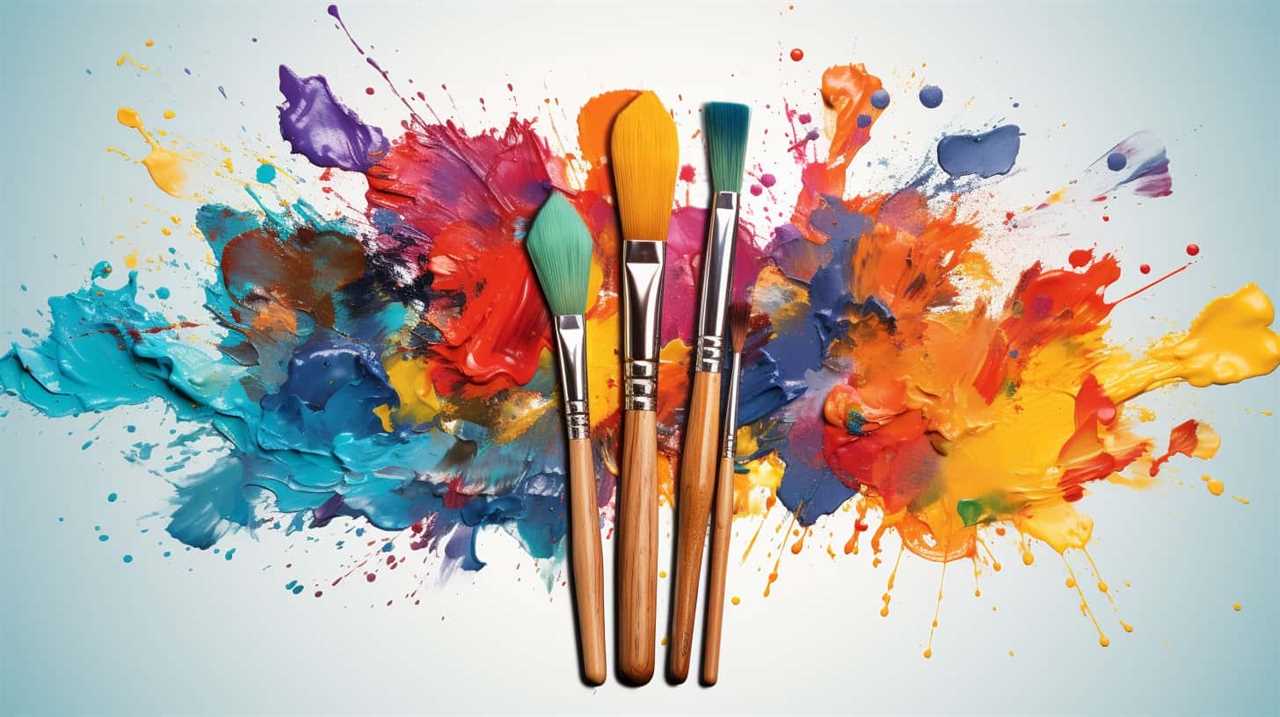
Navigating the Digital Landscape as an Artist
As artists in the digital age, we’re faced with both new challenges and exciting opportunities. Online art marketplaces have opened up a global audience for our work, allowing us to connect with art lovers from around the world.
Digital tools have revolutionized the way we create and share our art, giving us the ability to experiment, collaborate, and push the boundaries of traditional mediums.
And in this digital landscape, building a strong digital portfolio is essential for showcasing our talent and attracting potential clients and collaborators.
Let’s explore how we can navigate this ever-evolving digital world to further our artistic journeys.
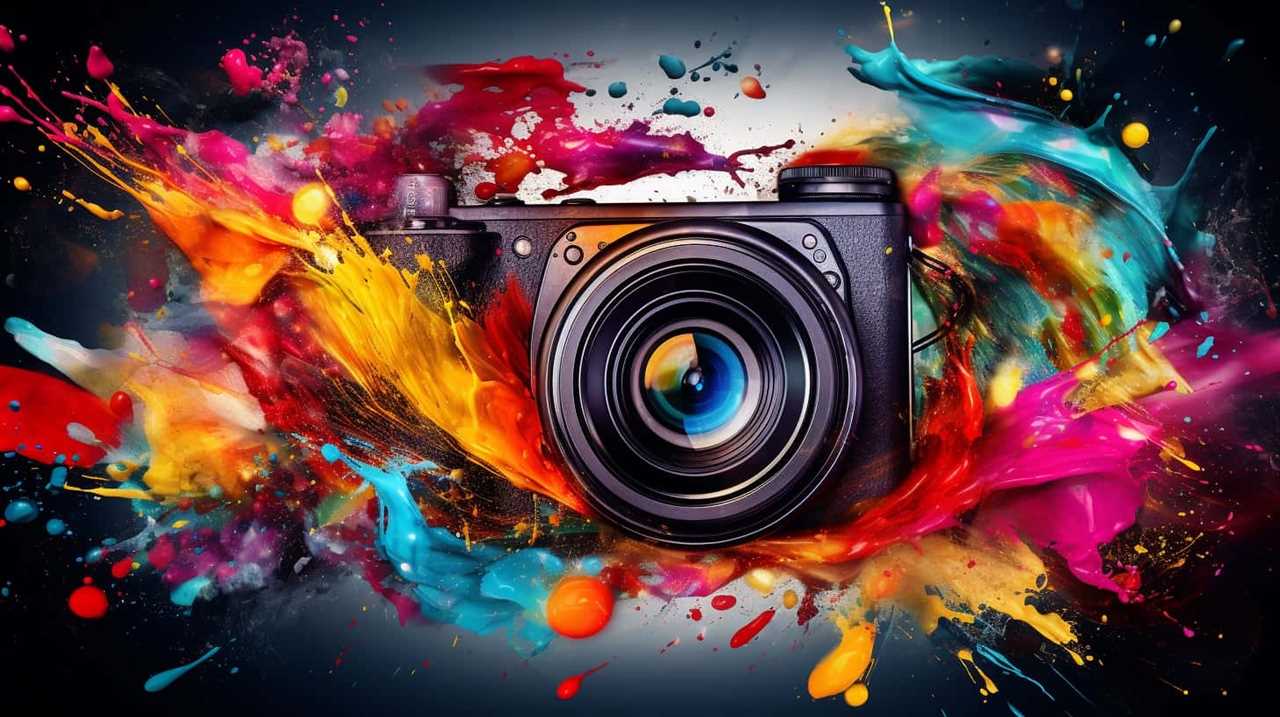
Online Art Marketplaces
After researching various online art marketplaces, we’ve discovered that navigating the digital landscape as artists can be both challenging and rewarding.
In this age of technology, online art marketplaces have emerged as platforms where artists can showcase their work, connect with potential buyers, and stay updated on emerging art trends. These platforms offer artists the freedom to express their creativity without the limitations of traditional galleries.
However, with the vastness of the digital landscape, it can be overwhelming to find the right platform that aligns with your artistic vision and values. It’s essential to research and understand the different online art marketplaces available, their target audience, and the opportunities they provide.
Digital Tools for Artists
Navigating the digital landscape as artists, we’ve discovered that utilizing digital tools is essential for thriving in the information age. In this ever-evolving world, technology has become the brush and the canvas, enabling us to explore new dimensions of creativity. Here are some reasons why digital tools are indispensable for artists:

- Digital drawing techniques: With the help of digital tools, we can experiment with various digital brushes, textures, and effects, allowing us to create unique and mesmerizing artworks that push the boundaries of imagination.
- Online art communities: The digital realm has opened up a whole new world of connectivity, where artists from all corners of the globe can come together, share their works, collaborate, and inspire one another. It’s a vibrant and diverse community that fosters growth and innovation.
- Accessible platforms: Digital tools provide us with accessible platforms to showcase and sell our art, breaking down the barriers of traditional galleries and reaching a wider audience. We can now build our own online portfolios, marketplaces, and social media presence to connect directly with art enthusiasts and potential buyers.
- Infinite possibilities: The digital landscape offers endless possibilities for experimentation and exploration. We can seamlessly merge different mediums, incorporate animations, and create interactive experiences, giving our art a dynamic and immersive quality.
- Preservation and documentation: Digital tools allow us to preserve and document our creative process. We can easily save iterations, make revisions, and track our artistic journey, ensuring that our work isn’t only seen but also remembered.
In this digital age, embracing technology as artists empowers us to push the boundaries of our creativity, connect with like-minded individuals, and share our unique perspectives with the world. The digital tools at our disposal aren’t just tools; they’re keys to unlocking our artistic potential and liberating our creativity.
Embrace the digital landscape, and let your imagination soar.
Building a Digital Portfolio
We have found that one crucial aspect of navigating the digital landscape as artists is building a digital portfolio.
In today’s interconnected world, having an online presence is essential for artists to showcase their work, reach a wider audience, and connect with potential clients and collaborators.
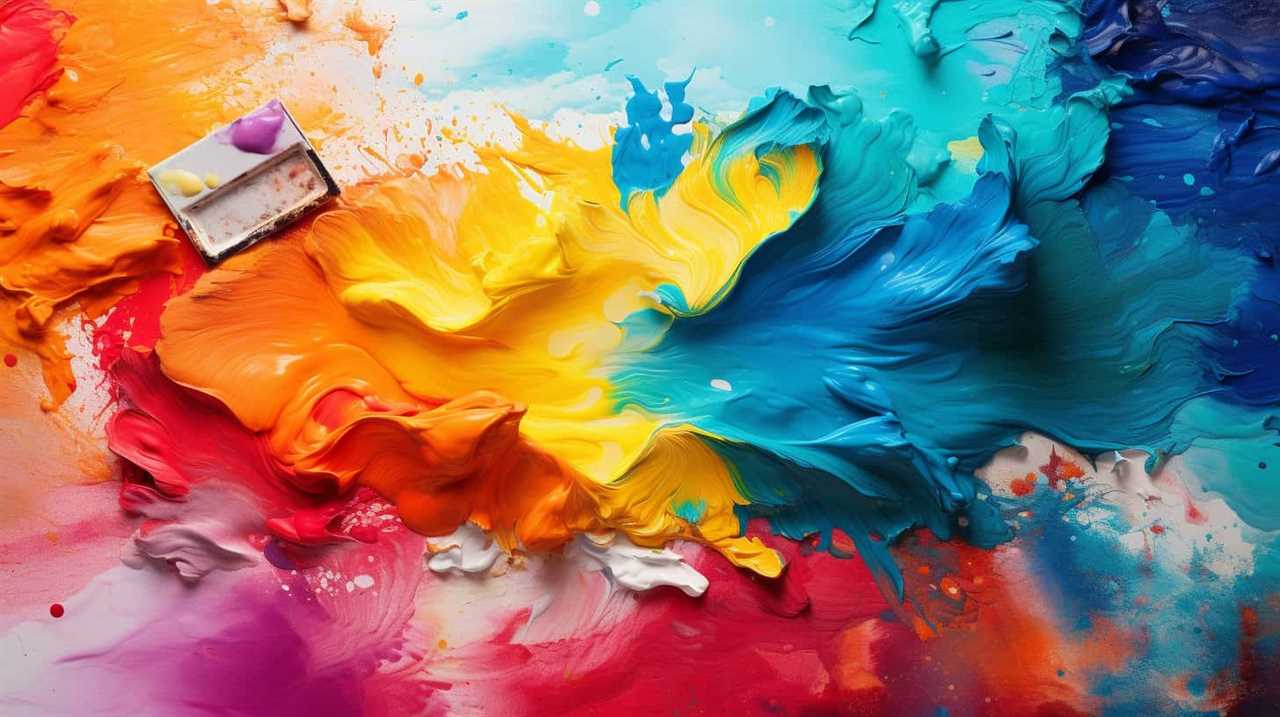
A digital portfolio allows artists to curate their best pieces, highlighting their unique style and artistic vision. It provides a platform to showcase their creativity, skills, and versatility.
With the power of the internet, artists can now share their work with people from all over the world, breaking free from the limitations of physical galleries and exhibitions.
Building a digital portfolio not only helps artists establish their brand and professional identity but also opens up new opportunities for growth and success in the digital age.
Embracing Technology for Creative Expression
As creators in the Information Age, we’ve a wealth of technological tools at our disposal to enhance our creative expression. From digital art software to virtual reality experiences, the possibilities seem endless.
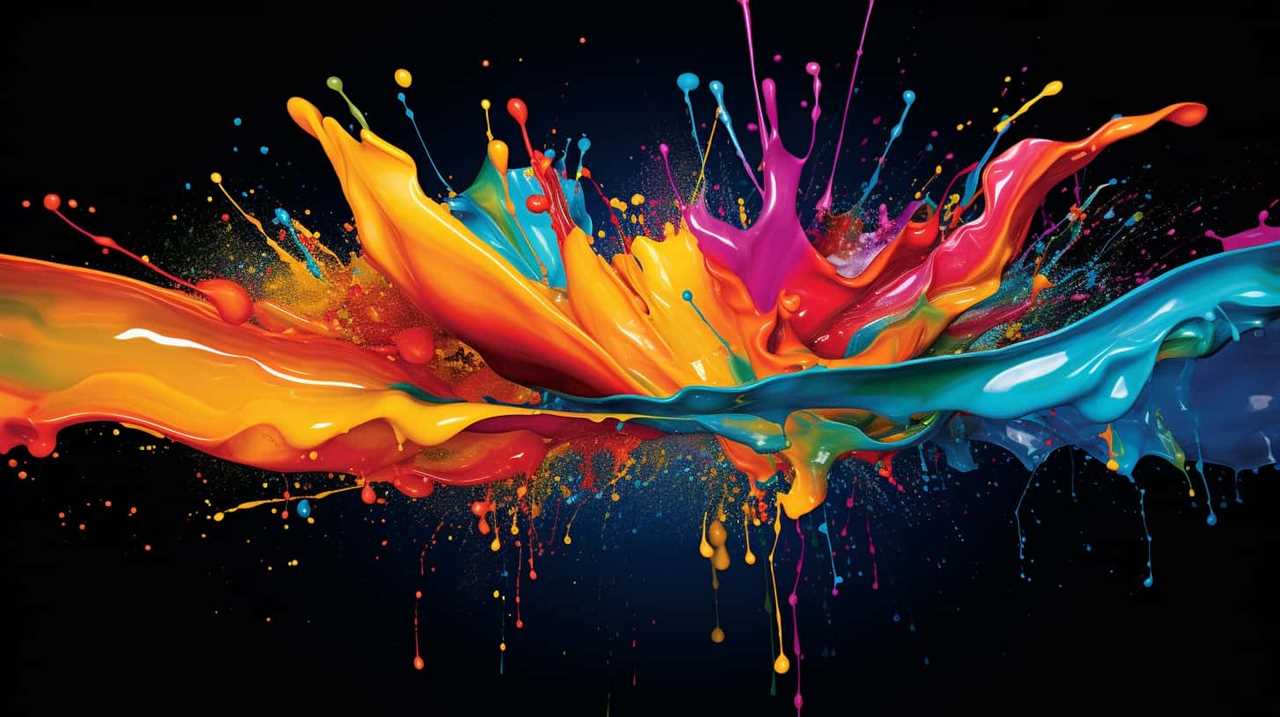
However, it’s crucial to strike a balance between embracing technology and maintaining the authenticity of our analog roots. By finding harmony between the digital and the analog, we can unlock new dimensions of creativity and push the boundaries of what’s possible in our artistic endeavors.
Tech-Enhanced Creative Possibilities
The use of technology enhances our creative possibilities, allowing us to express ourselves in new and innovative ways.
In this digital age, we’ve at our disposal a vast array of tech-based artistic techniques that enable us to unleash our imagination and bring our ideas to life. Imagine being able to create stunning visual masterpieces with just a few clicks, or composing breathtaking soundscapes using virtual instruments and effects.
With the power of technology, we can now seamlessly blend different mediums, such as combining photography with graphic design or animation. And let’s not forget about the incredible potential of digital storytelling, where we can immerse our audience in captivating narratives through interactive experiences.

Technology has opened up a world of creative possibilities, empowering us to break boundaries and liberate our artistic expression.
Balancing Analog and Digital
While technology provides us with countless opportunities for creative expression, it’s crucial to strike a balance between analog and digital mediums.
In this age of rapid technological advancement, it’s easy to get swept up in the allure of digital tools and forget the value of traditional techniques.
However, maintaining a balance between analog and digital is essential for preserving the authenticity and depth of our creative work.
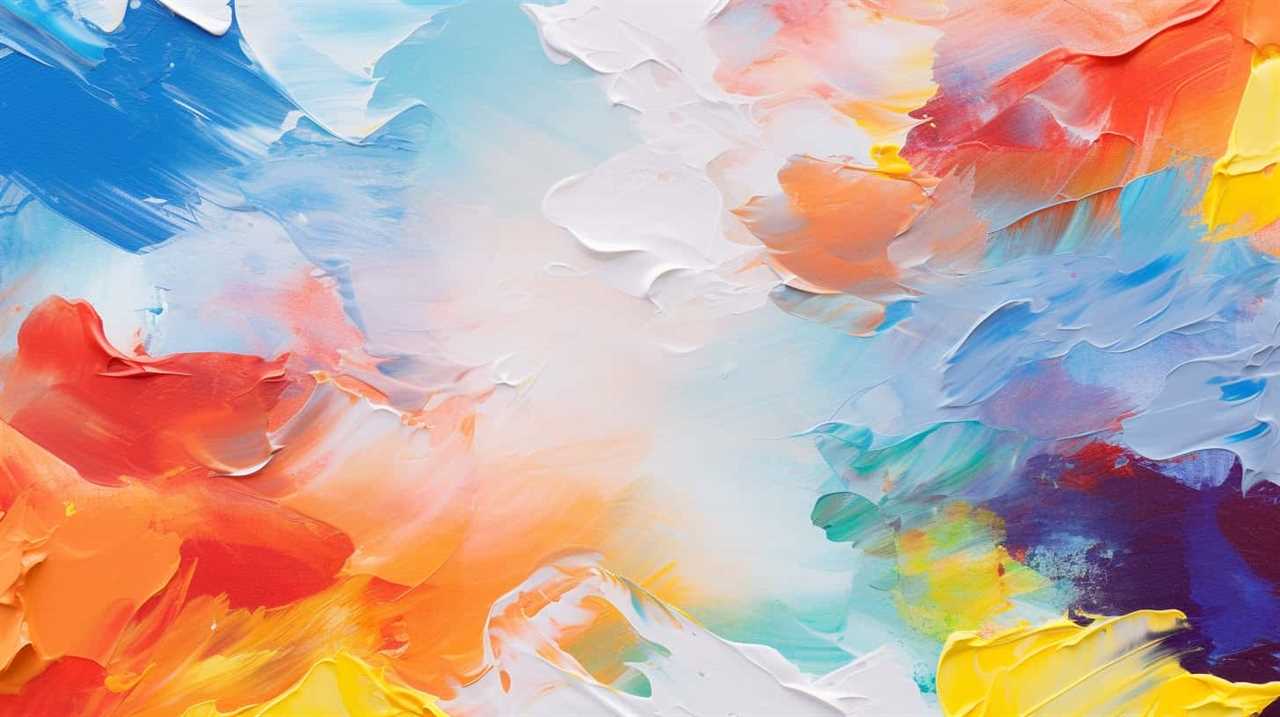
While digital tools offer convenience and efficiency, analog mediums provide a tactile and intimate experience that can’t be replicated.
By embracing both analog and digital, we can tap into the best of both worlds and create truly unique and meaningful art.
Now, let’s explore how to strike a balance between authenticity and virtuality in our artistic endeavors.
Balancing Authenticity and Virtuality in Art
We strive to strike a balance between authenticity and virtuality in our artistic endeavors. In this age of information, where technology allows us to create art in virtual spaces, it becomes essential to navigate the fine line between traditional practices and innovative approaches.

As artists, we’re constantly challenged to preserve our artistic integrity while embracing the opportunities that the digital realm presents.
Here are five key aspects to consider when balancing authenticity and virtuality in art:
- Honoring tradition: We must acknowledge and respect the roots of our craft, drawing inspiration from past masters and techniques that have stood the test of time.
- Embracing innovation: At the same time, we shouldn’t shy away from experimenting with new tools and technologies, allowing them to expand our creative horizons.
- Maintaining uniqueness: In the virtual world, it’s crucial to cultivate our individuality and distinct artistic voice, ensuring that our work stands out amidst the vast sea of digital creations.
- Connecting with the audience: While virtual art offers new platforms for self-expression, we mustn’t forget the importance of engaging with our audience on a personal and emotional level.
- Evolving with intention: Balancing authenticity and virtuality requires us to adapt and evolve our artistic practices consciously, making deliberate choices that align with our creative vision.
Harnessing the Power of Social Media for Artists
Harnessing the power of social media can greatly benefit artists in expanding their reach and connecting with a wider audience. In today’s digital age, social media platforms have become powerful tools for artists to showcase their work, build their brand, and engage with their fans. Social media marketing allows artists to promote their art to a global audience, breaking down geographical barriers and reaching people who may not have discovered their work otherwise.
One of the key advantages of utilizing social media for artists is the ability to build an online community. Artists can create a space where they can connect with like-minded individuals, share their artistic journey, and receive feedback and support from their followers. Online community building not only fosters a sense of belonging but also provides opportunities for collaboration and networking.

Furthermore, social media platforms offer artists a cost-effective way to market their art. Traditional forms of advertising, such as print media or gallery exhibitions, can be expensive and limited in scope. With social media, artists can showcase their work, create engaging content, and interact with their audience, all at little to no cost.
Embracing social media as an artist requires a strategic approach. It’s important to identify the platforms that best align with your target audience and artistic style. Consistency and authenticity are key in maintaining a strong online presence. By leveraging the power of social media, artists can unlock new opportunities, expand their artistic horizons, and connect with a global community of art enthusiasts.
Redefining the Boundaries of Art in the Digital Era
As technology continues to advance, the boundaries of art are being redefined in the digital era. We’re witnessing a revolution in artistic expression, where traditional mediums are merging with digital platforms, giving rise to a whole new world of creative possibilities.
Here are five ways in which the digital era is redefining art:

- Democratization of art: The digital era has made art accessible to all, breaking down the barriers of elitism and exclusivity. Anyone with a smartphone or computer can now create and share their artwork with the world, empowering individuals to express themselves freely.
- Blurring the lines: Digital mediums in art have blurred the lines between different forms of expression. Paintings can come to life through animation, sculptures can be created through 3D printing, and music can be composed using algorithms. The possibilities are endless, and artists are pushing the boundaries of what’s considered art.
- Collaborative art: The digital era has facilitated collaboration among artists from different parts of the world. Through online platforms, artists can now connect, share ideas, and create together, transcending geographical limitations and fostering a global artistic community.
- Interactive experiences: Digital art allows for immersive and interactive experiences that engage the audience on a whole new level. Virtual reality, augmented reality, and interactive installations redefine the traditional passive art-viewing experience, inviting the audience to participate and become part of the artwork.
- Preservation and accessibility: Digital mediums have revolutionized the preservation and accessibility of art. Artworks can now be digitized and stored indefinitely, ensuring their longevity and making them accessible to future generations. Additionally, online platforms and digital galleries provide a global audience with instant access to a vast array of artwork.
As we explore the intersection of art and artificial intelligence, we’ll delve into how technology is shaping artistic creation and challenging our notions of what art can be.
Exploring the Intersection of Art and Artificial Intelligence
As we explore the intersection of art and artificial intelligence, we uncover a whole new world of possibilities. AI has the potential to revolutionize artistic expression, allowing us to create artworks that were previously unimaginable.
However, we must also consider the ethical implications of AI art, as it raises questions about authorship, creativity, and the role of the artist.
Ultimately, the collaboration between humans and AI in the realm of art opens up a fascinating dialogue about the nature of creativity and the boundaries of human imagination.

AI in Artistic Expression
At the intersection of art and artificial intelligence, we’re witnessing the emergence of AI in artistic expression. It’s an exciting time where technology and creativity intertwine, opening up new possibilities and pushing the boundaries of what art can be.
Here are some intriguing aspects of AI in artistic expression:
- AI in music composition: Imagine a machine composing symphonies that evoke deep emotions, blurring the line between human and machine creativity.
- AI in film production: Picture a world where AI algorithms analyze vast amounts of data to create compelling storylines and stunning visuals, revolutionizing the way films are made.
As AI continues to evolve, it raises important questions about the ethical implications of AI art. How far should we let AI influence our artistic expression, and what does it mean for the authenticity and human touch in art?
Let’s delve into these thought-provoking questions and explore the ethical implications of AI art.

Ethical Implications of AI Art
Exploring the ethical implications of AI art reveals a complex landscape where technology and creativity intersect. As AI continues to advance and generate art, questions arise about the nature of authorship, authenticity, and the role of human creativity.
AI generated art challenges traditional notions of what it means to be an artist and raises concerns regarding the potential for plagiarism and copyright infringement. Additionally, there are ethical considerations regarding the potential biases embedded in AI algorithms and the impact on cultural diversity and representation.
While AI art offers exciting possibilities and pushes the boundaries of artistic expression, it’s crucial to critically examine the ethical implications and ensure that AI is used responsibly and ethically.
Human-Ai Collaboration in Art
By delving into the realm of human-AI collaboration in art, we can further understand the intricate relationship between creativity and technology in the information age. The impact of artificial intelligence on artistic innovation is undeniable, and it opens up a world of possibilities for human-AI collaboration in music and other art forms.
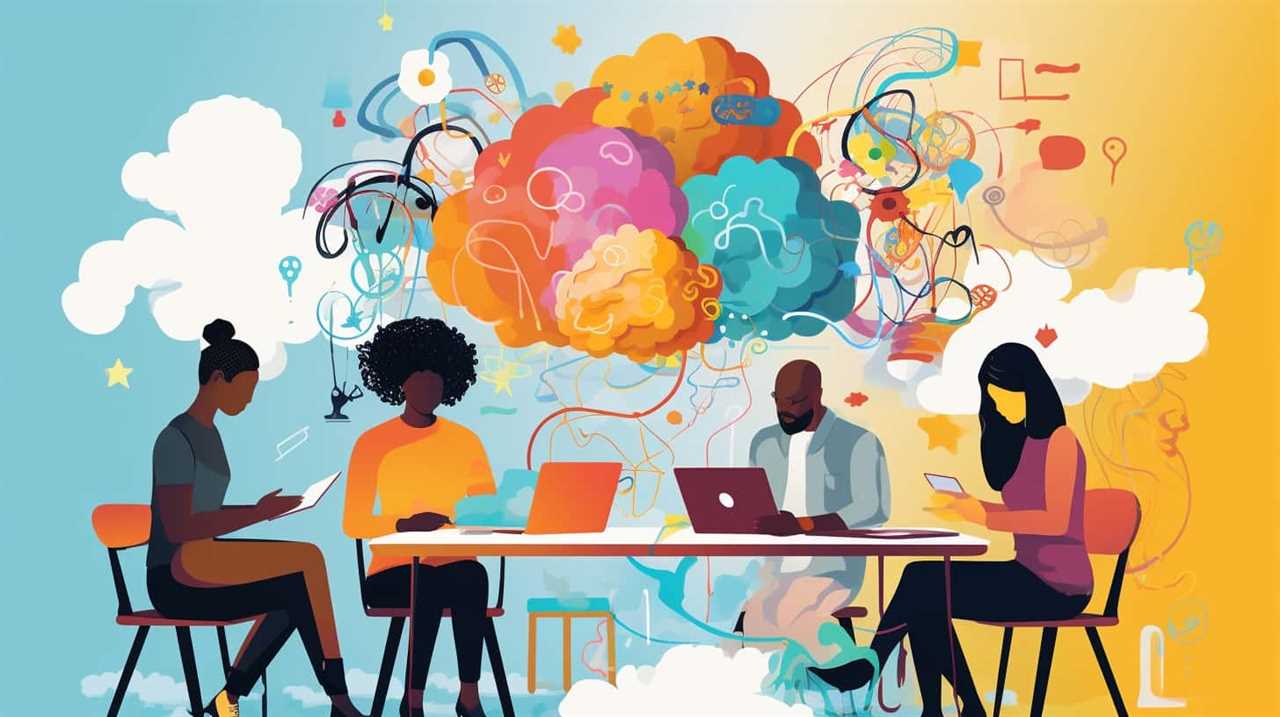
Here are some ways in which this collaboration is transforming the art scene:
- AI algorithms generating unique musical compositions that push the boundaries of traditional music.
- Artists using AI tools to enhance their creative process and explore new artistic directions.
- Collaborations between AI systems and human artists, resulting in innovative and unexpected creations.
- AI-generated art raising questions about authorship, ownership, and the definition of art itself.
- The fusion of human creativity and AI capabilities leading to the emergence of entirely new art forms.
As we explore the realm of human-AI collaboration in art, it becomes evident that the evolution of traditional art forms is intricately intertwined with the digital age.
The Evolution of Traditional Art Forms in the Digital Age
In our digital age, traditional art forms have undergone a significant evolution. The evolution of photography, in particular, has been nothing short of remarkable. With the advent of digital cameras and smartphones, anyone can now capture and edit images with ease. This has democratized the art form, giving rise to a new generation of photographers who push the boundaries of creativity.
But it’s not just photography that has evolved in the digital age. The impact of virtual reality on traditional art forms can’t be ignored. VR has opened up a whole new world of possibilities for artists. They can now create immersive experiences that engage the senses and transport the viewer to another reality. This fusion of art and technology has sparked a revolution, challenging traditional notions of what art can be.

The digital age has liberated artists from the constraints of physical mediums. They can now experiment with new techniques and mediums, blurring the lines between different art forms. Traditional paintings can be transformed into digital masterpieces, sculptures can come to life through animation, and music can be composed using algorithms.
In this age of digital innovation, traditional art forms aren’t being left behind. Instead, they’re evolving and adapting to the new possibilities that technology offers. As artists continue to explore the intersection of art and technology, we can expect to see even more exciting and groundbreaking creations in the future.
Embracing the Opportunities of Digital Collaboration
With the evolution of traditional art forms in the digital age, we’ve witnessed an exciting shift towards embracing the opportunities of digital collaboration. The possibilities are endless when artists come together in the virtual realm, using technology to connect and create in ways that were once unimaginable.
Here are five reasons why digital collaboration is revolutionizing the artistic landscape:

- Breaking down barriers: Digital collaboration allows artists from different backgrounds and locations to come together, transcending geographical boundaries and cultural barriers. It fosters a sense of unity and diversity, enriching the creative process.
- Expanding perspectives: Collaborating digitally opens up new perspectives and ideas. It encourages artists to step out of their comfort zones and explore uncharted territories, leading to innovative and boundary-pushing artworks.
- Enhancing skill sets: Through virtual collaboration, artists can learn from one another, sharing techniques and knowledge. This exchange of skills elevates the collective expertise of the group, creating a dynamic environment for growth.
- Pooling resources: By collaborating digitally, artists can pool their resources, such as software, equipment, and expertise, to create high-quality and impactful artworks. This enables them to achieve more together than they could individually.
- Amplifying impact: Digital collaboration allows artists to reach a wider audience, amplifying the impact of their work. By harnessing the power of social media and online platforms, artists can connect with people from all corners of the world, sparking conversations and inspiring change.
As we embrace the opportunities of digital collaboration, we also delve into the role of data in artistic creation.
The Role of Data in Artistic Creation
As artists embrace the opportunities of digital collaboration, we discover the pivotal role that data plays in the process of artistic creation. In this age of information, where technology has become an integral part of our lives, it’s only natural that it influences our artistic expression.
Data serves as a wellspring of inspiration, providing artists with a vast array of information to interpret and incorporate into their work. The role of data in artistic interpretation can’t be underestimated. It allows artists to explore new perspectives, challenge conventional thinking, and push the boundaries of creativity. By analyzing data, artists can uncover patterns, trends, and connections that may not be readily apparent. They can then use this information to create thought-provoking and inspiring pieces that resonate with their audience.
Technology has revolutionized the artistic process, enabling artists to experiment with different mediums, techniques, and styles. With the vast amount of data available, artists can now access a wealth of information, ranging from historical art movements to contemporary trends. This abundance of data allows artists to draw inspiration from a diverse range of sources and create works that reflect the ever-changing world we live in.
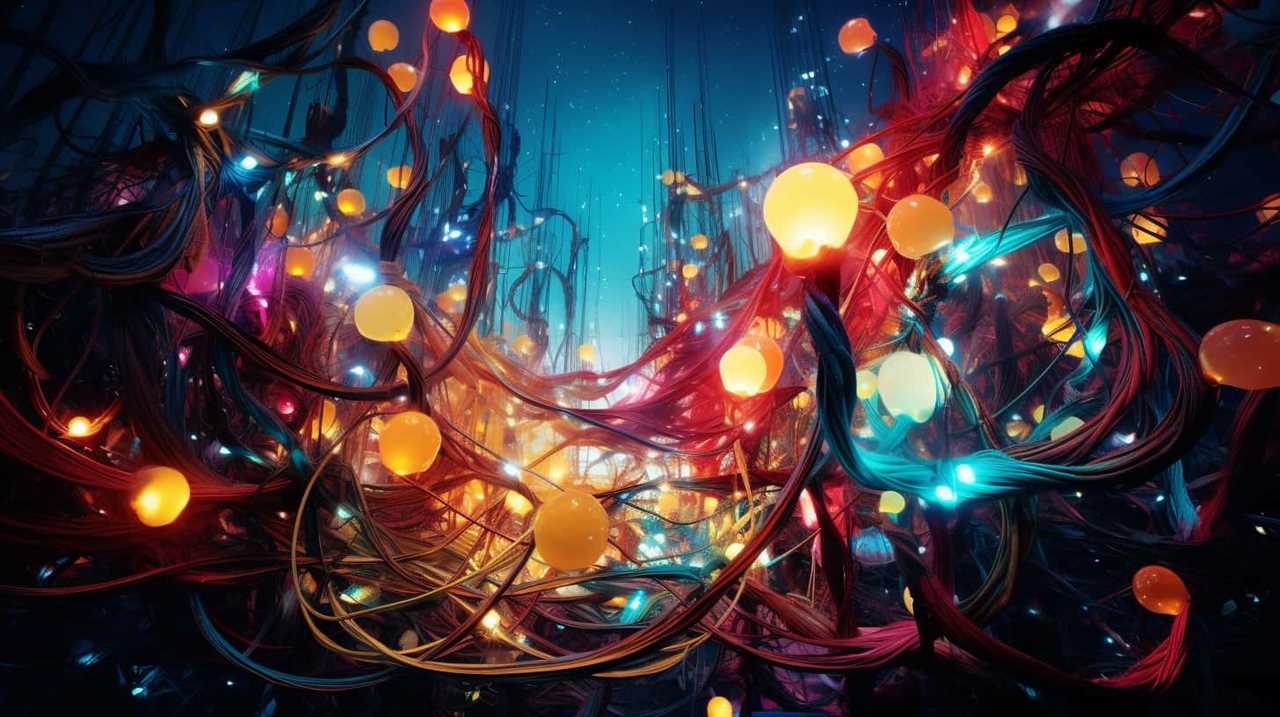
Fostering Creativity in the Age of Information Overload
To effectively navigate the challenges of information overload, we must prioritize cultivating creativity by embracing new strategies and approaches. In this age of digital distractions, fostering innovation requires finding ways to harness the power of information without succumbing to its overwhelming influence. Here are five strategies to help us foster creativity amidst the chaos:
- Embrace mindfulness: By practicing mindfulness, we can train our minds to stay focused and present, allowing us to filter out the noise and distractions that hinder our creative thinking.
- Create digital boundaries: Setting limits on our digital consumption helps us regain control over our attention and time, allowing space for our minds to wander and explore new ideas.
- Cultivate curiosity: Actively seeking out new knowledge and experiences stimulates our imagination and opens up new pathways for innovative thinking.
- Collaborate and connect: Engaging with diverse perspectives and collaborating with others can spark fresh ideas and push our creativity to new heights.
- Embrace failure: Recognize that failure is an essential part of the creative process. Embracing failure as a learning opportunity frees us from the fear of making mistakes, allowing us to take risks and explore uncharted territories.
Finding Inspiration in the Digital World
The digital world offers a wealth of inspiration for us to tap into and fuel our creative endeavors. In this age of information overload, finding creativity online can seem like a daunting task. But fear not, for the digital realm is a vast playground of possibilities just waiting to be explored.
From stunning visuals on social media platforms to thought-provoking articles and videos, there’s no shortage of digital inspiration.
One way to find inspiration online is by following creative individuals and organizations on social media. They often share their work, ideas, and insights, which can spark your own creative thinking. Another great resource is online communities and forums dedicated to specific creative disciplines. Engaging with like-minded individuals can provide fresh perspectives and help you break free from creative blocks.
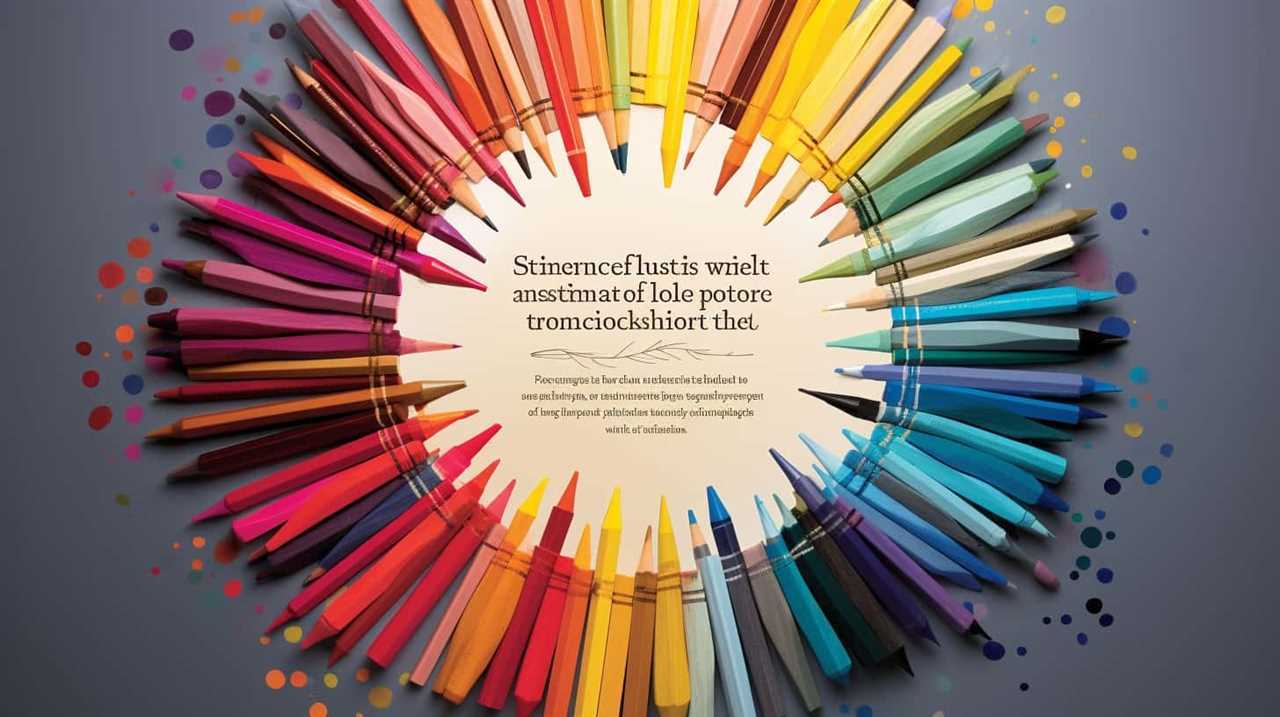
Additionally, platforms like YouTube and TED Talks offer a treasure trove of inspiring content. From talks by renowned artists, entrepreneurs, and innovators to tutorials and demonstrations, these platforms can ignite your imagination and push you to think outside the box.
Responding to Criticisms of Digital Art
Let’s address the misconceptions surrounding digital art and explore how we can embrace it as a valid and innovative form of creative expression.
Many critics argue that digital art lacks the authenticity and skill of traditional art, but we must challenge this notion and recognize the unique possibilities that technology offers.
Digital Art Misconceptions
In our experience with digital art, we’ve often encountered misconceptions and criticisms that we’d like to address. It’s time to debunk the myths surrounding this incredible form of artistic expression.

Here are some common misconceptions about digital art:
- Digital art isn’t ‘real’ art: This couldn’t be further from the truth. Digital art requires just as much skill, creativity, and passion as any traditional art form.
- Digital art is easy: Creating digital art isn’t a walk in the park. It takes time, practice, and technical know-how to master the tools and techniques involved.
- Digital art lacks originality: Digital artists have the ability to create unique and innovative pieces that push the boundaries of imagination.
- Digital art is just copying and pasting: While digital artists can incorporate existing elements, they use them as building blocks to create something entirely new.
- Digital art is soulless: Digital art can evoke just as much emotion and meaning as any other art form. It’s the artist’s vision and intention that breathe life into their creations.
Let’s embrace the liberation that digital art offers and recognize its true potential as a powerful medium for self-expression and creativity.
Embracing Digital Art
We have encountered numerous criticisms of digital art, but we firmly believe that its potential for self-expression and creativity is limitless. Some argue that digital art lacks the authenticity and craftsmanship of traditional art forms. However, we mustn’t overlook the unique techniques and benefits that digital art brings to the table.
Digital art allows artists to experiment with a wide range of tools and effects that would be impossible to achieve through traditional means. From digital painting to 3D modeling, the possibilities are endless. This medium also offers the advantage of easy editing and revision, allowing artists to refine their work until it perfectly aligns with their vision.

Moreover, digital art has the power to democratize the creative process. With the rise of technology, anyone with access to a computer can become an artist. This accessibility breaks down barriers and provides opportunities for individuals who may have otherwise been excluded from the art world.
In embracing digital art, we liberate ourselves from the constraints of conventional art forms. We open ourselves up to a world of infinite possibilities and uncharted territories. Let’s celebrate and explore the boundless potential of digital art, pushing the boundaries of our imaginations and redefining what it means to be a creator in the information age.
Adapting to the Changing Art Market in the Information Age
Navigating the evolving landscape of the art market in the Information Age requires a keen understanding of adaptability and innovation. As artists, we must embrace the digital revolution and adapt our practices to the ever-expanding realm of online art sales.
Here are five tips to help us thrive in this changing art market:

- Embrace digital platforms: In the digital age, the online space offers countless opportunities for artists to showcase and sell their work. By adapting to digital platforms, we can reach a global audience, breaking free from the limitations of physical galleries.
- Build an online presence: In this digital era, having a strong online presence is crucial. Create a website or utilize social media platforms to showcase your portfolio, engage with your audience, and build a community of art enthusiasts.
- Explore new sales channels: Traditional gallery spaces are no longer the sole avenue for selling art. Online marketplaces, art fairs, and virtual exhibitions offer alternative ways to connect with collectors and sell your work.
- Stay informed about emerging technologies: The art market is continuously evolving, with new technologies shaping the way we create, distribute, and consume art. Stay up-to-date with the latest advancements to stay relevant and innovative.
- Foster connections in the online art community: Collaborate with other artists, curators, and collectors to foster a vibrant online art community. Networking and building relationships can open doors to new opportunities and collaborations.
The Future of Art in the Digital Revolution
The future of art in the digital revolution holds immense potential for innovation and transformation. As technology continues to advance at an unprecedented rate, traditional art forms are being redefined and reimagined in ways we could have never imagined.
Virtual reality, in particular, has emerged as a powerful tool that’s reshaping the art world. Virtual reality allows artists to create immersive experiences that transcend the limitations of traditional mediums. It opens up a whole new realm of possibilities, allowing viewers to step into the artist’s world and engage with their work on a deeper level. Imagine walking through a painting or interacting with a sculpture in ways that were previously unimaginable.
The impact of virtual reality on art extends beyond the viewer’s experience. Artists themselves are embracing this technology to push the boundaries of their own creativity. They’re using virtual reality as a canvas, exploring new techniques and experimenting with unconventional materials. The digital revolution isn’t replacing traditional art; instead, it’s expanding its horizons and offering artists new avenues for self-expression.
As we look to the future, it’s clear that the digital revolution will continue to shape and redefine the art world. Traditional art forms will coexist with digital art, and the boundaries between them will blur. The possibilities are endless, and the future of art holds a world of liberation and creative exploration.

Frequently Asked Questions
How Has Digitalization Affected the Accessibility of Art for the General Public?
Digitalization has democratized access to art, making it more accessible for the general public. With the click of a button, we can explore diverse artworks from around the world, expanding our horizons and inspiring our own creativity.
What Are Some Challenges That Artists Face When Navigating the Digital Landscape?
Navigating digital platforms can be challenging for artists. We face obstacles like copyright issues and the pressure to conform to trends. But with perseverance and creativity, we can overcome these hurdles and liberate our art in the information age.
How Can Artists Maintain Their Authenticity in a World Dominated by Virtuality?
In a world dominated by virtuality, maintaining authenticity as artists can feel like chasing a unicorn. But fear not! We can strike a balance between virtual and physical art spaces, unapologetically expressing our unique voices and liberating creativity.
Can Social Media Really Enhance an Artist’s Career and Reach?
Social media marketing and online portfolio building can indeed enhance an artist’s career and reach. By harnessing the power of these platforms, artists can connect with a global audience, gain exposure, and break free from traditional limitations.
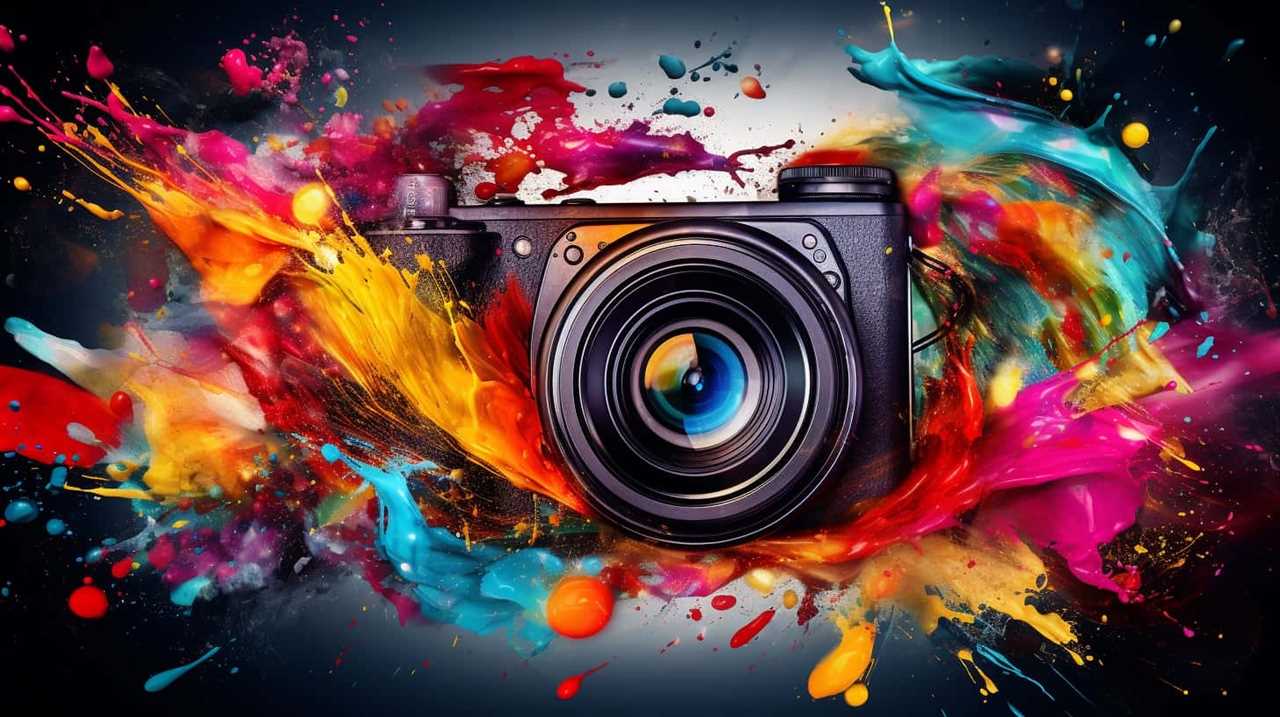
How Has the Digital Revolution Impacted the Traditional Art Market and Its Value?
The digital revolution has completely transformed the traditional art market, turning it upside down and shaking it vigorously. The value of art has shifted, and new opportunities have emerged, challenging our preconceived notions and pushing the boundaries of creativity.
How Can Emotion and Expression Impact Creativity in the Information Age?
Emotion and expression play a crucial role in creativity, especially in the information age. The best quotes on creativity emotion often highlight the need for tapping into one’s emotions to fuel artistic expression and innovative thinking. Embracing and channeling emotions can lead to groundbreaking ideas and unique perspectives.
Conclusion
In this digital revolution, the boundaries of art are expanding, and artists are embracing technology to express their creativity.
But amidst the virtuality, how do we maintain authenticity? How do we find inspiration in the vast digital world?
As the art market evolves, artists must adapt and harness the power of social media to connect with their audience.
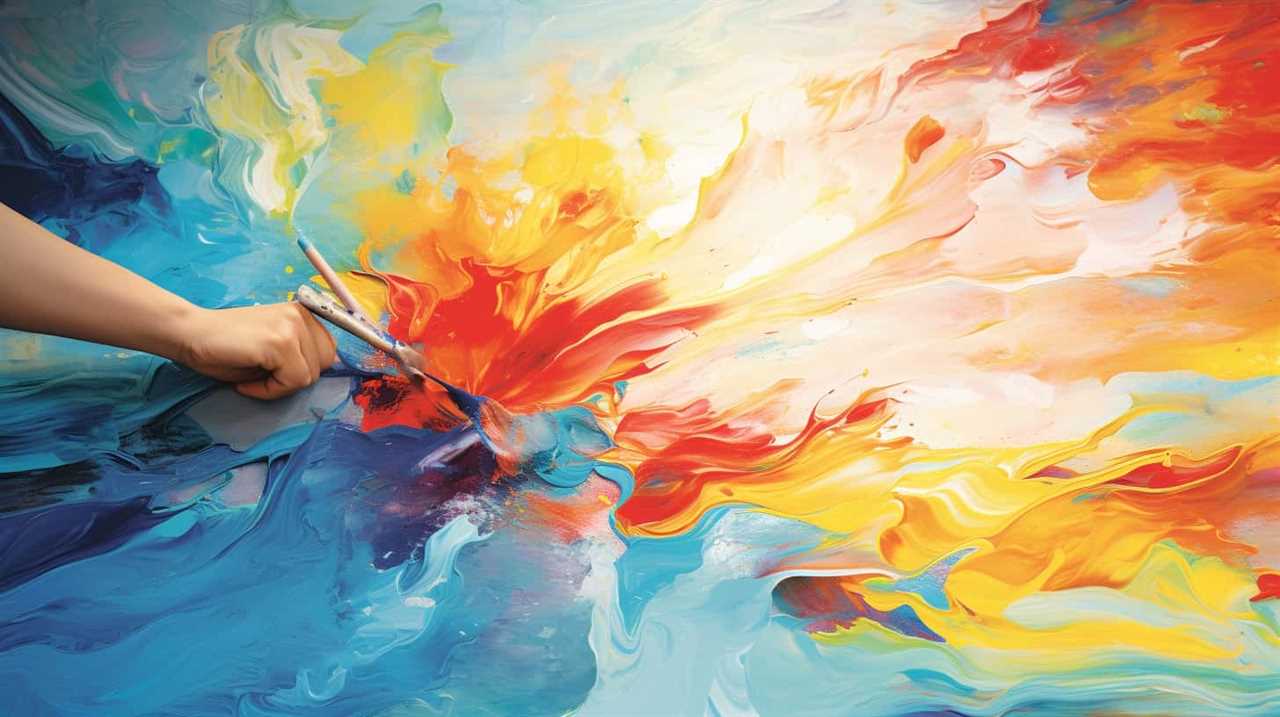
The future of art holds endless possibilities, and in this information age, we must ask ourselves: Are we ready to redefine what it means to be an artist?
Lauren’s talent in writing is matched by her passion for storytelling. Her love for books and deep understanding of culture and entertainment add a distinct flavor to her work. As our media and press contact, Lauren skillfully bridges the gap between afterQuotes and the broader media landscape, bringing our message to a wider audience.



